Firm/Studio Name
Ravish Mehra Deepak Kalra (RMDK)
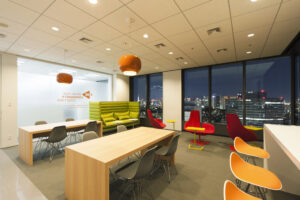
How did you come up with the name of your studio?
We never imagined our studio as a corporate structure but as a more personal yet professional workspace. Including our own names helped people associate us with our work and remember easily, while giving us a more personalized essence. It also simplified the working of our firm, where there are two partners; both known individually for their own niche work style while functioning as one solid unit. Further, we also happened to have the fortune of securing a few important projects even before naming or registering the firm. Hence RMDK simply began with the names of the two Partners on letterhead, with the name remained as it was throughout.
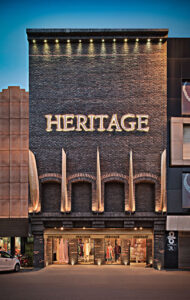
What determined your passion for design? Tell us about the moment when you decided this is the way to go.
The two partners came together with different sets of experiences, but a similar zeal to pursue design. While Ravish Mehra was driven by innovation and creative challenges, it was destined for Deepak Kalra, who sat for the architecture exam with no preparation and a vague knowledge about the field from distant sources, only to realize this is exactly where he had always wanted to be. After graduating together from the School of Planning and Architecture, Delhi, they both decided to explore design and architecture together, establishing the firm in 1980. There was no looking back after.
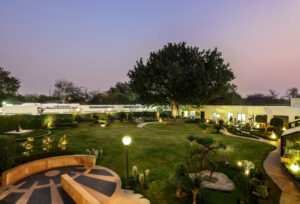
What kind of projects were you doing when you first started as a designer?
We started with a few residential projects, while also exploring exhibition design on the side. We soon came to realize that it was a very unexplored field in the country and took it up more seriously as a profession which eventually opened up immense opportunities for us.
We were involved with various prestigious Theme Centric concept designs for national and international Trade Shows and Exhibitions covering a wide range of Products and Services. Exhibition design had its own limitation though, being very temporary and less fulfilling personally, as compared to longer standing spatial experiences. We missed the physicality and longevity of projects, of being able to see more people interact with these spaces.
Meanwhile, the global experience and vast exposure to the design fields had made us realize the scope of Retail and Corporate Design in India, where the core objective is to create a Brand Identity. Thus, we managed to secure a client who wanted to venture in that direction and invest money in the design value. We built our first project in Connaught Place in Delhi, and soon became well known as the pioneers of the field, eventually took us to every corner of the country.
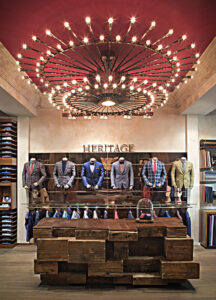
What field of design are you most interested in?
Ravish Mehra: Remodeling, reconstructing, and adaptive reuse is one of the most interesting fields for me. It provides a playground where existing buildings and spaces can be completely modified, with a reinterpreted end-use, structure, systems, and services. It’s always amazing to see how any functional changes to the existing and available structures can create a completely different Built Environment with respect to the initial intended use or application.
Deepak Kalra: I am intrigued by the versatility and endless possibilities of design. I feel what is actually interesting is the attention paid to the detailing. It’s about how a well-planned design element can make or break a space, and create very different design languages based on the requirement. Though, due to my experience and exposure to retail design, it’s a field that’s always going to remain close to heart.

What is your favorite book/magazine on design? How about your favorite site?
Ravish Mehra: “Future Shock” by Alvin Toffler is one of my favorites. Although written nearly 50 years ago, it accurately forecasted the social conditions in the present context. I largely access the websites on a need basis, but those relating to “Sustainable Design” and “Biophilic Design” remain my favorite.
Deepak Kalra: I am really fond of Tadao Ando’s work, and I like to read about his work every now and then. “Tadao Ando: The Colours of Light” is amongst my top favorites, as the photos beautifully capture the many wonderful details of Ando’s architecture, giving new insights and evoking imagination into the magnificence of forms and context.
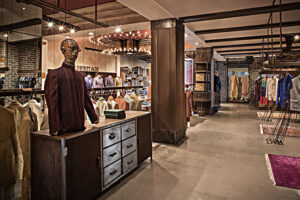
What is your Signature Style?
Ravish Mehra: My signature style would be about creating harmonious and free-flowing spaces which are site-centric. I like to experiment with the flow of volumes, continuity of spaces, connection with nature, and the natural lighting and ventilation based on suitable geographic orientations.
Deepak Kalra: I believe in being a versatile designer. For me, the design is very subjective and depends on the nature of the project, client, and context. Every design style needs to have something that brings everything together, and that’s where my major concern lies; about how I can give the simplest solutions to the most complicated design problems while maintaining a strong visual and experiential quality of the given space.
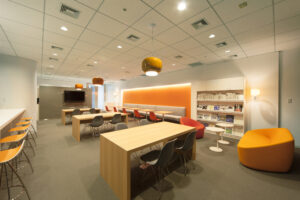
What inspires you to thrive in this industry? Which piece of architecture inspires you the most.
Ravish Mehra: The resources of our planet have been over-exploited by humans. It’s my sincere pursuit to attempt and embody/ preach the practice of “Reduce, Reuse and Recycle” as much as I can to optimize the Carbon Footprint. Falling Water by Frank Lloyd Wright created more than eighty years back, is one of my major sources of inspiration.
Deepak Kalra: The infinite iterations of details possible with every new material and technology that comes up, along with designing solutions for interesting design challenges in the simplest manner and simplest forms inspires me to thrive in the industry. I am inspired by the works of Tadao Ando, like the Church of Light and the Chichu Art Museum.
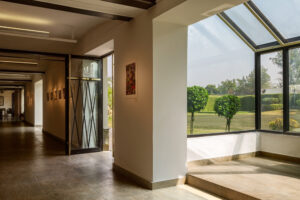
From your point of view, is design an art or a science?
Ravish Mehra: Attempts to confine Design in the domain of Art or Science would be rather inappropriate, as it responds to everything around including nature, as well as the socio-political, economic, and geographical conditions. Similarly, even in Science & Technology the term ‘State of Art’ is used to describe frontline innovations.
Deepak Kalra: Design a blend of both, art and design. One can’t exist without the other. Design can be a pure art form only to an extent. For it to exist physically, science is of the utmost importance with a wide execution knowledge about tech, systems, materials, etc. required.
If you had no limits (money, resources), what would you create?
Ravish Mehra: Built environments with multifunctional spaces, where the ‘Live, Work & Play’ takes place in the same environment, thereby optimizing the limited resources of the planet including land, energy consumption, and carbon footprint, will be my priority. It’s an issue that the COVID pandemic also highlighted with newer forms of spatial interactions, like ‘Work from Home’ gaining popularity.
Deepak Kalra: I am curious about the extent of influence that design can have on the human psyche, and would love to imagine and create a city that has a museum-like quality. It will be an exclusive collection of inspiring and individualistic designs by an assorted mix of architects, sculpture artists, visual artists, product designers, interiors, and fashion designers, coming together to build and present their best works, with each built mass behaves as an exhibit itself. I imagine this city to be awe-inspiring and full of immersive experiences, sparking the imagination of every visitor and ushering a new way of interacting with our built spaces, thus influencing the culture of the society at large. I would name this project as ‘A city of design’.
What advice do you have for young designers or architects reading this interview?
Ravish Mehra: The internet is a powerful tool for easy access to a large amount of information, but excessive use of the same tends to compromise on the ‘Creativity’ and ‘Original Thinking’ as the subconscious mind finds it difficult to differentiate between ideas that are inventive or prevalent.
Deepak Kalra: Let your imagination run wild. Don’t think about the design limitations in the first go. They are an important factor, but can always be addressed with innovative details, and shouldn’t override the essence of creativity and design itself. The possibilities are always immense, and it’s important to pursue the uniqueness of imagination, against all the limitations.













